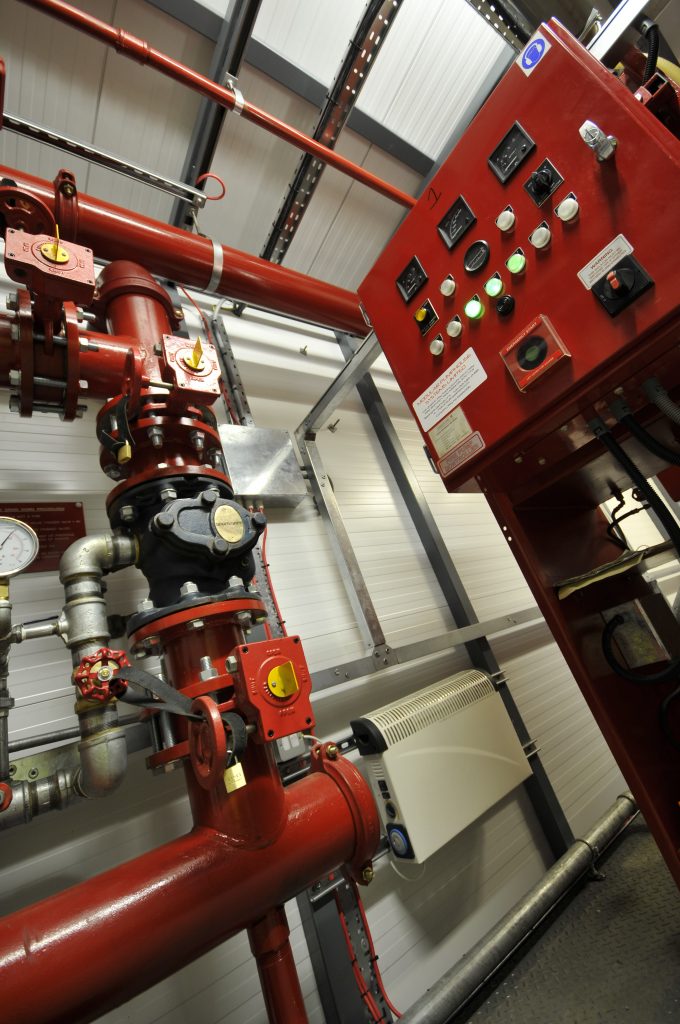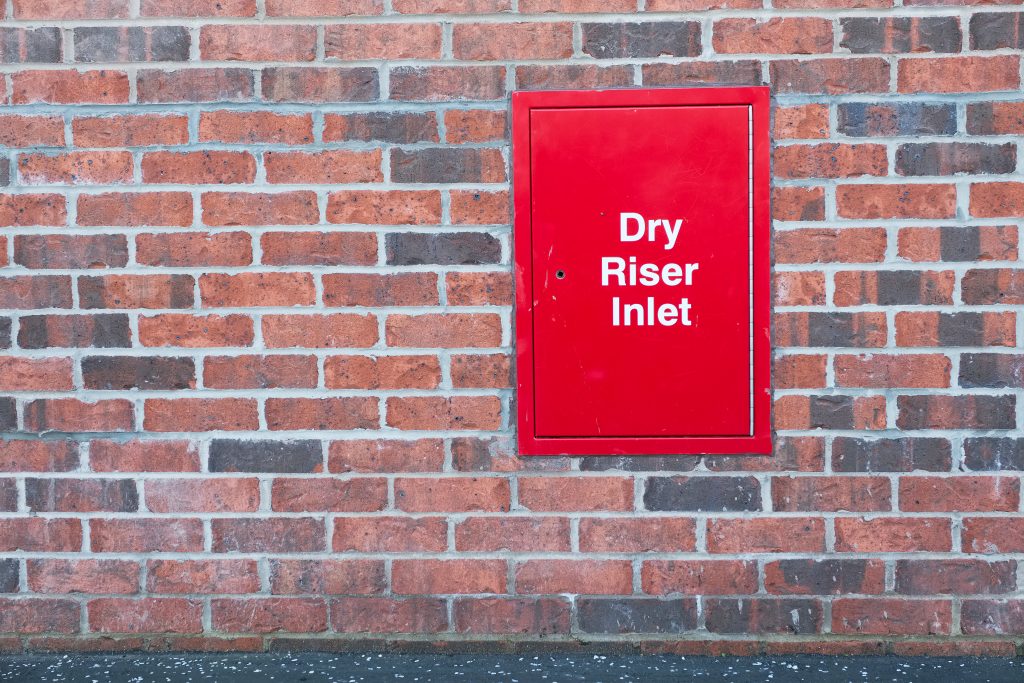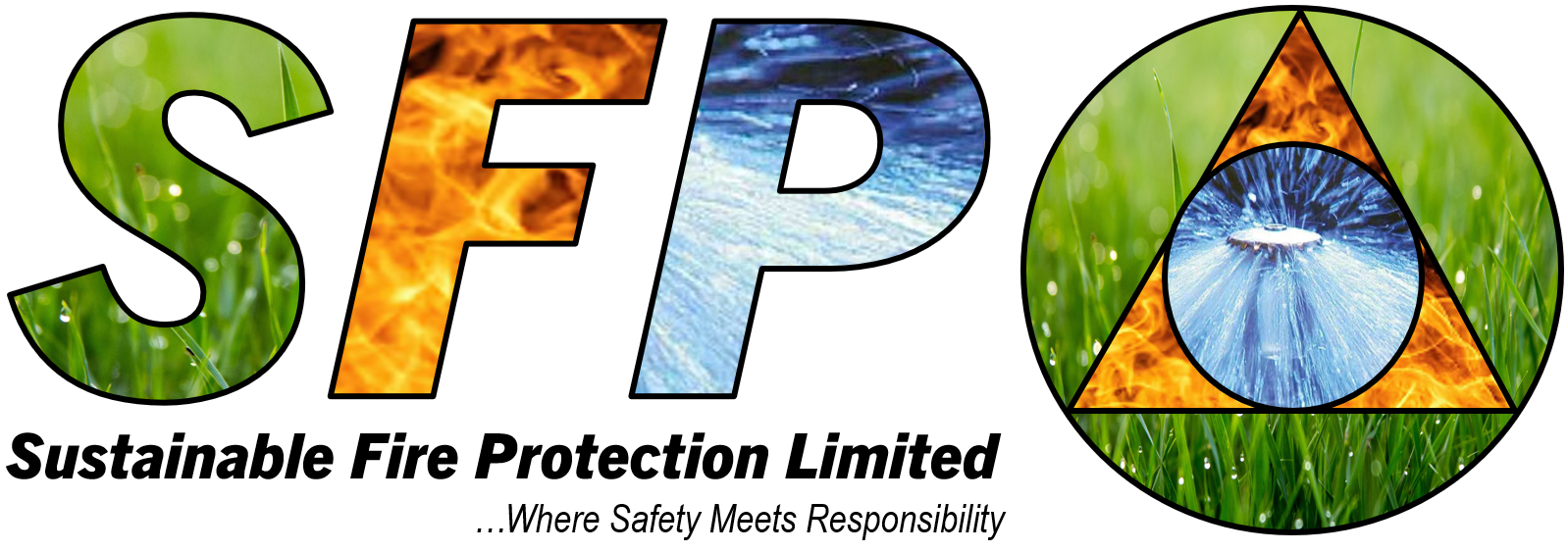Unit F, Watton Farm, Watton Lane, Southampton, SO32 3HA
02394 226007
info@sustainablefireprotection.com

We specialise in the testing and maintenance of Dry & Wet Risers, Residential & Commercial Sprinkler Systems, maximising the service life and reliability of your fire protection asset.
The ability of any fire protection system to perform it’s intended functions for Life Saftey, Property Protection, Business Protection and to Protect the Environment should be beyond doubt. In the event of a fire, the person responsible for the building i.e. the property owner, landlord or facilities manager, may be required to provide evidence that the system is compliant and that a suitable maintenance regime is in place to verify serviceability. The same may also be required by insurers to comply with Property & Business Interruption policies.
At Sustainable we take immense pride in how we service and maintain the systems that we are resposnible for. We are always happy to talk to end users about how to best satisfy regulatory requirements and set the right balance for their organisation between planned and reactive maintenance.
We are also more than happy to cover call-outs, testing and maintainance for other companies by arrangement.
Sprinkler Systems:

Automatic Fire Sprinkler systems are installed in Residential, Commercial and Industrial buildings to satisfy insurance and / or life safety requirements. They are often described as the ‘Silent Sentinel’, unnoticed in the background, until they are callled to action in an emergency situation.
Under the RRO (Regulatory Reform Order 2005/6), they must be tested and maintained in accordance with manufacturer’s technical bulletins and a recognised standard, such as BS EN 12845:2015+A1:2019 standard and related LPC Technical Bulletins , BS9251:2015 or NFPA25.
As a guide, a typical simple sprinkler system will require as a minimum, the following testing & maintenance prgram:
- Daily Visual Inspection – checking valves and gauges
- Weekly Functional Test – verify alarms, test pumps
- Quarterly Hazard Review – checking system is still fit for purpose
- Half-Yearly Service – flow test water supplies
- Annual Service – service internal valve parts
- Tri-Annual Service – excercise and service all subsidiary valves
N.B. Each system is different, we are always happy to visit site to undertake a visual survey and assement of your system before we provide you with pricing options.
Risers:

Dry and Wet Risers are mandatory firefighting and protection equipmentinstalled buildings above 18m high (the maximum height that can be reached by firefighters from the ground.) They assist fire fighters by providingconsiderable quantities of water, quickly, high up into the building. Under theRRO (Regulatory Reform Order 2005/6), they must be maintained in accordancewith BS9990:2015.
Approved Document B (Fire Safety) states that any building with it’s top level more than 18m above Fire Brigade access at street level, or with levels more than 10m below ground, to have a Dry Riser. When the top level exceeds 50m, a wet riser system is required.
Dry Risers:
Dry Risers consist of a breaching inlet, which has an instantaneous coupling to allow the fire brigade to connect hoses at street level, to fill the vertical riser pipe from their fire tenders, and outlet valves on every floor, so that once the Dry Riser is pressurised, fire fighters can connect their hoses to instantaneous couplings. This enables fire fighters to quickly access all floors, carrying only short hoses, as opposed to spending time trying to get water to upper floors by connecting multiple hoses. An Air Release Valve is fitted to enable the Dry Riser to vent air during filling.
As a guide, a typical Dry Riser will require as a minimum, the following testing & maintenance prgram:
- Half-Yearly Service – recommended by BS9990:2015
- Annual Service – legal requirement – includes 12 bar (175psi) pressure test for a minimum of 15 minutes to verify the system is leak-free
N.B. Each system is different, we are always happy to visit site to undertake a visual survey and assement of your system before we provide you with pricing options.
Wet Risers:
When the top level of a building exceeds 50m, normal fire tenders cannot provide enough pressure to get fire fighting water to this hieght, and a Wet Riser is required. Wet Risers are permenantly charged with water, ensuring immediate availability of fire fighting water at all floors. Wet Risers are typically fed from a dedicated storage tank with a minimum effective capacity of at least 67.5m³, giving fire fighters 1500 l/min (enough for up to 3 hoses) for 45 minutes. To achive a minimum effective capacity of at least 67.5m³, the tank volume can be reduced to 45m³ so long as a net infill of 500 l/min can be provided from the Town Main (i.e. after taking into account the requirements of any Dry Risers and Sprinkler System infills that may draw from the same incoming main). Wet Riser tank have fire brigade breeching inlet valves at street level, to allow the tank to be refilled constantly if required in an emergency.
Wet Risers are pressurised by a dedicated fixed pump set (consisting of Duty, Stand-by & Jockey pumps), that should provide at least 750 l/min simultaneously to the two most remote outlets. In stand-by mode, pressure in a Wet Riser is maintained by the automatic jockey pump (or set of jockey pumps when the riser has more than one pressure stage to prevent outlet pressures exceeding the maximum permitted 20 bars.) Outlet valves will located on every floor and should be fitted with pressure reducing devices to prevent static pressures exceeding the maximum permitted 12 bars..
BS9990:2015 recommends that maintenance valves be installed at intervals on vertical pipework not exceeding 10m to allow sections of pipework to be isolated – this reduces water wastage. BS9990:2015 requires that Wet Risers require a flow test as part of system commissioning and annually thereafter. If a permenant test and drain line is installed, this allows water to be drained back into the tank for re-use and to minimise wastage.
As a guide, a typical Wet Riser will require as a minimum, the following testing & maintenance prgram:
- Half-Yearly Service – recommended by BS9990:2015
- Annual Service – legal requirement – includes flow test from 2 most remote outlets
Fire Hydrants:
A fire hydrant is used to allow authorised persons access water directly from the local mains supply, and is equipped with a fire hose connection for use in the event of a fire.

Annual fire hydrant testing ensures that in the event of a fire, firefighters have all the tools available to them in good working order. In accordance with BS9990:2015 clause 7.3.2., private fire hydrants require (annual) inspection and testing by a suitable contractor.
This verifies that the equipment is operational and ensures that the property owner can demonstrate compliance with The Regulatory Refom (Fire Safety) Order 2005 Part 2.
Sustainable Fire Protection Limited can undertake your annual fire hydrant inspection and testing using the state-of-the-art Flowmaster 250 hydrant flow and pressure test instrument, to help minimise water wastage and obtain & record accurate data, verifying that your fire fighting equipment is compliant, including:
- Checking of pits, frames and covers
- Checking the condition of surface paving around the edges of the frame
- Depth of outlet below frame
- Ensuring signage is compliant
- Checking inlet connection
- Flushing outlets to verify system is free of blockages
- Measuring and recording the flow and pressure rates
- Operation of the frost protection valve
- Leaving hydrant pit empty and clean
- Issuing a Certificate of Conformity
N.B.: Once tested and found to be compliant, Sustainable Fire Protection Limited will issue a Certificate of Conformity in compliance with BS9990:2015, which can be shown to auditors and fire officers.
Sustainable Fire Protection Limited regularly undertake fire sprinkler, fire hydrant and dry riser testing amd maintenance in: Bath, Berkshire, Birmingham, Brighton & Hove, Breconshire, Bristol, Buckinghamshire, Cambridge, Cambridgeshire, Canterbury, Carmarthenshire, Cardiff, Chelmsford, Chichester, Colchester, Coventry, Derby, Derbyshire, Dorset, East Sussex, Exeter, Essex, Fareham, Glamorgan, Gloucester, Gloucestershire, Gosport, Greater London, Guernsey, Hampshire, Havant, Hereford, Herefordshire, Hertfordshire, Isle of Wight, Jersey, Kent, London, Milton Keynes, Monmouthshire, Newport, Keynes, Oxford, Oxfordshire, Pembrokeshire, Plymouth, Portsmouth, Salisbury, Southampton, Southend-on-Sea, St Albans, Somerset, Suffolk, Surrey, Truro, Westminster, West Midlands, West Sussex, Wiltshire, Winchester, Wolverhampton – we are more than happy to discuss other areas on a project-by-project basis.
N.B. Each system is different, we are always happy to visit site to undertake a visual survey and assement of your system before we provide you with pricing options.

